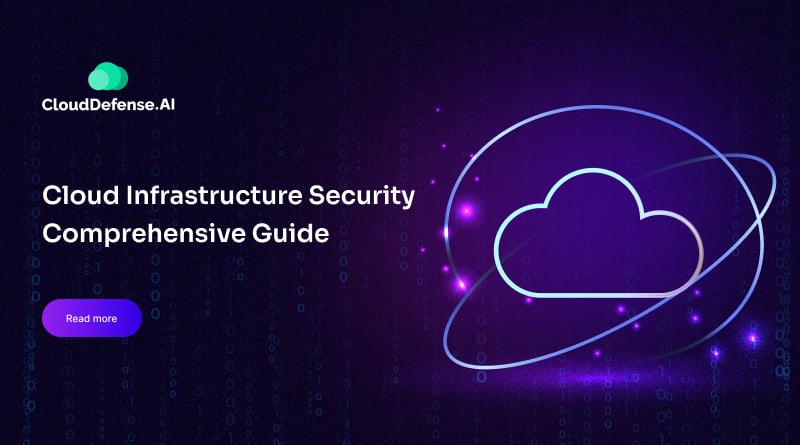Introduction
The technological landscape is rapidly shifting towards cloud-native infrastructure, with predictions indicating that the world will store an astounding 200 zettabytes of data in the cloud within the next two years. In the face of this monumental data transition, concerns about data security and resource protection are more pertinent than ever. This comprehensive guide aims to illuminate the realm of Cloud Infrastructure Security (CIS) in cloud computing, offering invaluable insights, best practices, and essential considerations to empower businesses in fortifying their virtual landscapes against potential vulnerabilities.
Understanding Cloud Infrastructure Security:
Cloud Infrastructure Security involves the implementation of practices, technologies, and policies to safeguard the underlying components and data within cloud computing environments. As businesses migrate operations to the cloud for scalability, cost-effectiveness, and enhanced performance, the imperative to secure the virtual infrastructure becomes evident. Key considerations include data encryption, identity and access management, network security, and compliance with industry regulations.
How Cloud Infrastructure Security Works:
Cloud infrastructure security operates through a layered defense strategy. Data is fortified through robust encryption methods, ensuring confidentiality during transmission and storage. Advanced identity and access management controls govern user permissions, preventing unauthorized access. Continuous monitoring, facilitated by sophisticated tools, detects anomalies in real-time, allowing for swift response. The shared responsibility model leverages the expertise of both cloud providers and users for a comprehensive defense against evolving cyber threats.
Types of Cloud and Security Approaches:
Public Cloud:
- Emphasis on the shared responsibility model.
- Focus on data encryption, workload security, and compliance.
- Mitigate cloud misconfigurations through Cloud Security Posture Management (CSPM) vendors.
Private Cloud:
- Elevated control and security measures.
- Address unauthorized access with access controls, isolation, and vigilant monitoring.
Hybrid Cloud:
- Unify security approaches with a single cloud security framework.
- Streamline efficiency by creating a cohesive security framework.
Key Components of Cloud Infrastructure:
Employee Accounts: Implement privilege management to thwart compromised accounts.
Cloud Servers: Conduct regular security audits and promptly apply security patches.
Hypervisor: Ensure regular updates, implement network segmentation, and adhere to secure boot processes.
Cloud Storage: Employ robust data protection methods for distributed storage.
Database: Implement data encryption, access controls, and conduct regular security assessments.
Cloud Network: Secure private networks through network segmentation, intrusion detection systems, and continuous monitoring.
Kubernetes: Secure each layer to establish a resilient cloud infrastructure.
Benefits of Cloud Infrastructure Security:
Ensuring Data Security: Implement strong encryption for data in transit and at rest.
Implementing Access Controls: Leverage Identity Access Management (IAM) for controlled resource access.
Threat Mitigation: Utilize advanced threat detection tools for timely identification and mitigation.
Defending from DDoS Attacks: Employ DDoS protection measures to ensure application availability.
Ensuring Compliance: Assist in achieving and maintaining compliance with industry regulations.
Shared Responsibility Model: Provide support for the Cloud Service Provider's shared responsibility model.
Security Threats to Cloud Infrastructure:
Insecure API: Identify potential entry points by addressing authentication and encryption gaps.
Cloud Misconfigurations: Mitigate vulnerabilities arising from poorly configured settings.
Unauthorized Access: Prevent unauthorized entry through the compromise of credentials.
Internal Threat: Address internal threats such as malicious insiders, human error, and compromised accounts.
Data Breach: Implement measures to prevent the exposure of sensitive information to cyber attackers.
Best Practices for Protecting Cloud Infrastructure:
- Understand the Shared Responsibility Model.
- Train Employees to mitigate internal threats.
- Enforce Security Policies across the company.
- Conduct Routine Security Audits for continuous improvement.
- Consider Securing Services from a CNAPP Vendor for comprehensive protection.
Conclusion
As the global shift towards cloud migration accelerates, prioritizing Cloud Infrastructure Security becomes imperative. This guide equips organizations with the knowledge to fortify their cloud infrastructure through diverse security measures, policies, and best practices. In the dynamic technological landscape, building an efficient and secure cloud infrastructure system is essential for businesses aiming to thrive in the digital era.



















